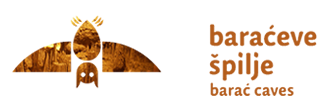Ecological network
The ecological network of the Republic of Croatia was proclaimed with the Regulation on the Ecological Network (NN 124/13), and represents the area of the ecological network of the European Union Natura 2000.
The Natura 2000 Ecological Network is a coherent European ecological network composed of areas in which there are natural habitat types and habitats of wild species that are of interest to the European Union, and allows for the preservation and, when necessary, restoration of certain natural habitat types and habitats of species in their natural area of distribution. Its goal is to contribute towards the preservation of the condition of more than a thousand endangered and rare species, as well as about 230 natural and semi-natural habitats. As of yet, about 28000 areas covering almost 20% of the territory of the EU have been included in this network, which makes it the largest system of protected regions in the world.
According to Article 6 of the Regulation on the Ecological Network, the ecological network of the Republic of Croatia consists of Special Protection Areas for Birds – SPAs (areas of importance for preserving and establishing favourable conditions for wild bird species of interest for the European Union and their habitats, as well as areas of importance for preserving migratory bird species, particularly when it comes to swampland of international importance) and Special Areas of Conservation for other important species and habitat types – SACs (areas of importance for preserving and establishing favourable conditions for other wild species and their habitats, as well as natural habitats of interest for the European Union).
Within the limits of the Protected Landscape, there is one area within the ecological network of the Republic of Croatia that has been designated as an area of conservation of importance for species and habitat types. This is Lower Barać Cave as the habitat of an endemic species of insect. Also, outside the protected area but within the territory of the Municipality of Rakovica, there are 3 more SAC areas and 1 SPA area. As the areas of the ecological network are managed by Public Institutions for the Management of Protected Areas, Božić’s Cave in Kordunski Ljeskovac is also under the management of this institution as the habitat of an endemic species of insect, together with Dumenčić Cave in the village of Keseri as the habitat of an endemic species of insect and the cave system Panjko’s Ponor – Varićak’s Cave as an important habitat for subterranean species and part of the SPA area of Gorski kotar and Lika.

